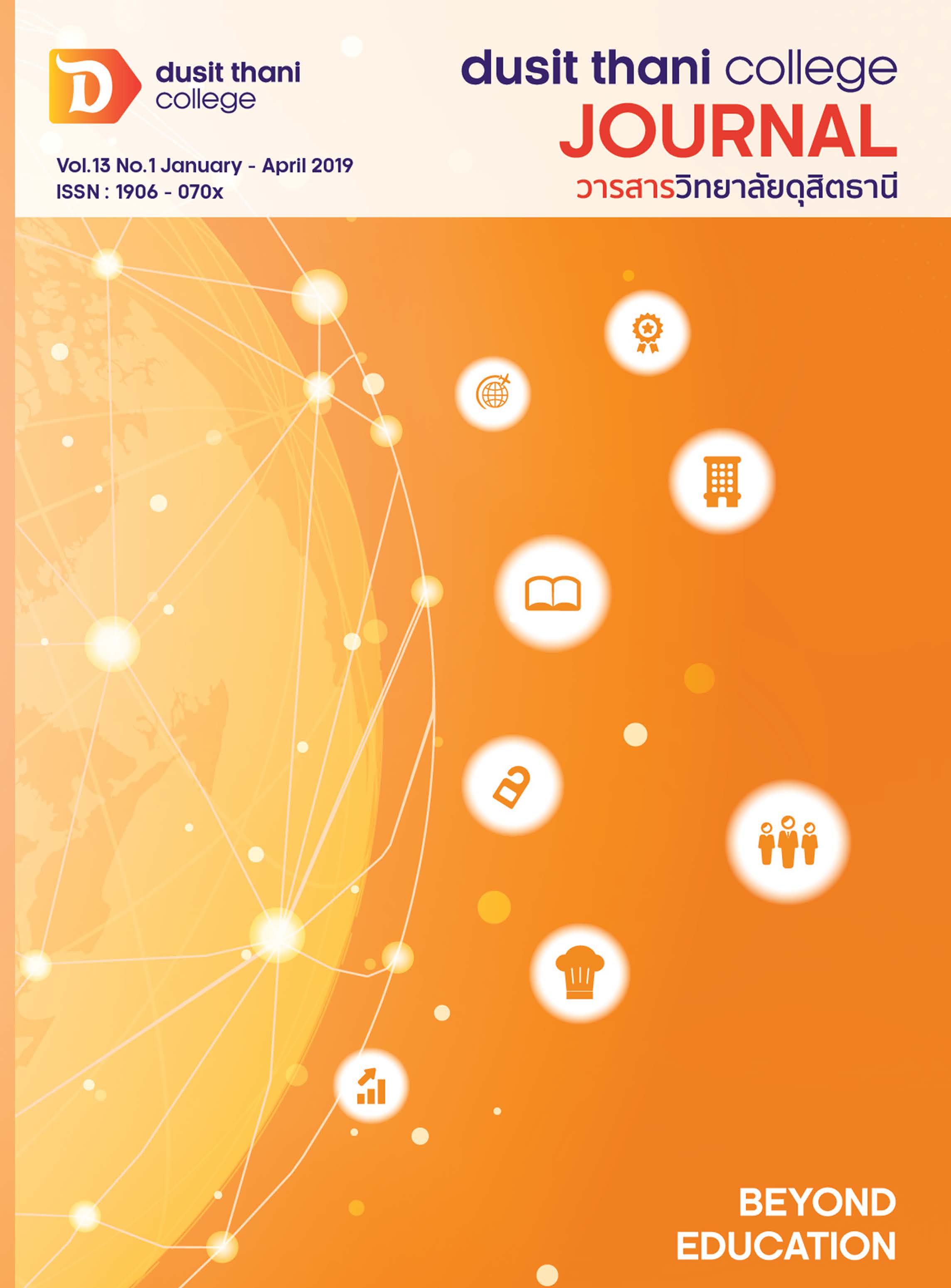Community Participatory Approaches for Creative Tourism Development: Selected Cases in Thailand
Main Article Content
Abstract
In Thailand, culturally-related tourism activities are not new to tourism industry, but it is evidently still left unrecognized and untended by the stakeholders on how to realize and add the creative elements to the existing tourism assets. This study concentrates on exploring positive mechanisms of community participation approaches in developing creative tourism products for achieving the best of what might be, instead of continuing to emphasize on the community’s problems. The proposed approaches are built upon Appreciative Participatory Planning and Action (APPA) techniques, which allow communities to identify their specific strengths and successes as a means to creatively and positively open up possibilities in the design of tourist assets. Based on a proposed 8-D cycle approach of Define, Discovery, Dream, Direction, Design, Delivery, Dance and Dialogue, this Appreciative Inquiry (AI) model provides a framework for community participation development planning to give community members a chance to have control over their own development process and make decisions that affect their livelihoods. Apparently, evidences from the selected case examples show that creative tourism development planning needs to be designed in an innovative setting with the right mechanism to drive group dynamics. In order for creative tourists to feel a part of the community, the residents have to understand the integration between the supply and demand sides, being proud of what they have, and at the same time must be willingly ready to create staged authenticity activities. Lesson learned from the application of the proposed model will be provided.
Article Details
Article Screening Policy
- All research and academic articles to be published must be considered and screened by three peer reviews in the relevant field / article.
- All articles, texts, illustrations and tables published in the journal are the personal opinions of the authors. Editors don't always have to agree. And no responsibility whatsoever is the sole responsibility of the author.
- The articles to be published must never be published. Where did you first publish? And not in the consideration of other journals If the audit found that there has been a duplicate publication It is the sole responsibility of the author.
- Any article that the reader sees as being plagiarized or impersonated without reference. Or mislead the work of the author Please let the journal editor know it will be your greatest blessing.
References
2. Aziz, R.C., Hashim, N.A.A.N., & Awang, Z. (2018). Tourism development in rural areas: Potentials of appreciative inquiry approach. Journal of Tourism, Hospitality & Culinary Arts, 10(1), 59-75.
3. Campbell, C. (2010). Creative tourism providing a competitive edge. Tourism Insight. Retrieved December 25th, 2016 from www.insights.org.uk/articleitem.aspx?title=Creative%20Tourism%20Providing%20a%20 Competitive%20Edge
4. European Travel Commission. (2005). City tourism and culture: The european experience.
A Report produced for the Research Group of the European Travel Commission (ETC) and for the World Tourism Organization (WTO). Madrid: World Tourism Organization.
5. Fariborz A. and Ma`rof, B.R. (2008). Tourism development for community capacity building and community development. TEAM Journal of Hospitality & Tourism, 5(1).
6. Fariborz, A., Sarjit S. G. & Farshid A. (2010). Tourism development in local communities:
As a community development approach. Journal of American Science, 6(2), 155-161.
7. Haywood, K. (1988). Responsible and responsive tourism planning in the community. Tourism Management. 9 (2), 105-108.
8. Jelinčić, D.A. and Žuvela, A. (2012). Facing the challenge? creative tourism in Croatia.
Journal of Tourism Consumption and Practice, 4(2), 8-90.
9. ICIMOD/ SVN Nepal. (2004). Developing sustainable communities: A toolkit for development practioners. Kathmandu: International Center for Integrated Mountain Development.
10. International Fund for Agricultural Development (IFAD) (2002). Managing for impact in rural development: A guide for project M&E. Rome: International Fund for Agricultural Development.
11. Richards, G. W. (2011). Creativity and tourism: The state of the art. Annals of Tourism Research, 38(4), 1225 - 1253.
12. Sangsnit, N. (2012). Summarized substance of knowledge exchange sessions in the community tourism festival under the theme of “a new move, a great move, on the Thai path towards sustainable tourism in the ASEAN economic”, the Designated Area of Chiang Mai Night Safari office in Hang Dong District, Chiang Mai Province, 2-3 June 2012
13. Simpson, M. C. (2008). Community benefit tourism initiatives - A conceptual oxymoron? Tourism Management, 29, 1-18.
14. Smith, M. (2005). Tourism, culture and regeneration: Differentiation through creativity,
in J. Swarbrooke, M. Smith, and L. Onderwater, (eds), Tourism, Creativity and Development: ATLAS Reflections 2005, Association for Tourism and Leisure Education, Arnhem, 23 - 38.
15. Strauss, A. L. and Corbin, J. M. (1998). Basics of qualitative research: Techniques and procedures for developing grounded theory. Thousand Oaks: Sage Publications.
16. Wisudthiluck, S., et al. (2013). A handbook of creative tourism model. Bangkok: Designated Areas for Sustainable Tourism Administration (Public Organization).
17. World Tourism Organization and European Travel Commission (2005). City tourism & culture: The european experience. A report produced for the Research Group of the European Travel Commission and for the World Tourism Organization. Madrid: WTO.


